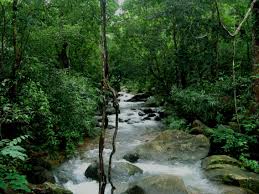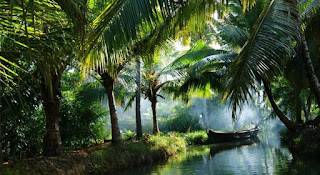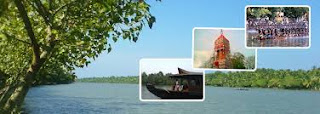Introduction
These two waterfalls are located about 60 kilometres away from the Thiruvananthapuram
city, the capital of Kerala. The Meenmutty and Kombaikani waterfalls are seen
on the upper reaches of the Neyyar Reservoir. They can be accessed by trekking
from the Kallar side. This place falls en route to the Ponmudi hill station. A
visit to this place offers a truly invigorating experience to both body and
mind. The way to these waterfalls offers a steep gradient. Hence, the tourists
have to move slowly.
Magnificent Waterfalls
Near Kallar in Thiruvananthapuram district of Kerala, one can find two
glittering waterfalls that act as two diamond necklaces to the mighty Western
Ghats mountain ranges in that region.
They are Meenmutty and Kombaikani. Both these waterfalls can be found en
route to the destination Agasthyakoodam. They are part of a trekking route
connecting Kallar and Agasthyakoodam. People who wanted to trek this terrain
need to get prior permission from the Kerala Forest Department. These two
waterfalls are found on the upper reaches of the Neyyar Reservoir in the
capital district of the state. While climbing along the trekking path from
Kallar, the first waterfall Meenmutty comes after walking a distance of 2
kilometres. After spending a while at the first waterfall, one would come
across the Kombaikani after covering a distance of another 2 kilometres. While
trekking through the path, one would come across a large number of bird species
and butterflies. The forest cover in this area is tropical in nature. Trekkers
usually come across leeches during the rainy seasons. Hence, they should come
completely prepared to ward off any issues relating to leech bite during that
time of the year. Another attraction is
the clean, cool and crystal clear water coming through waterfalls. While taking
bath, people would feel their body and mind totally charged up for the tasks
ahead. People climbing towards Agasthyakoodam can take rest in Kerala Forest
Department-owned guest house near Kombaikani waterfalls and recoup their
resources before resuming their journey towards the zenith.
Kallar
The base point in the trekking route is Kallar. This place is famous for
round-shaped boulders and pebbles. It falls on Thiruvananthapuram-Ponmudi bus route.
The name of this place is derived from a river that bears the same name. In
English language, “Kallu” means stone and “Aar” means river. In short, the name
of this place is derived from the Kallar River that flows through that area. This
place also has a small waterfall by which people stop for a while before they
resume their journey to the hill station. It is also a favourite haunting place
for picnickers from the city. The other people who frequent this place include
those who are interested in trekking, bird watching and angling. This is the
middle point of the route to the hill station from Thiruvananthapuram city.
Another attraction of this place is Golden Valley. This attraction can be
easily approached by road. The trekkers use this place as a base camp for
preparation to reach the zenith point in the Western Ghats – Agasthyakoodam. In
the Golden Valley, people can cool themselves off by dipping in a crystal clear
stream of water from Kallar River.
People who are interested in angling can find many rapids and small
pools in this river. The bird watchers also climb along this trek route to
reach the points from where they can see birds in close angles. Due to the
frequenting of people in this place, some tourist facilities are available
there. After Kallar, one may not find much of people and their habitat till one
reaches Ponmudi. Hence, the people say after Kallar starts the high range
begins.





















 />
/>


















